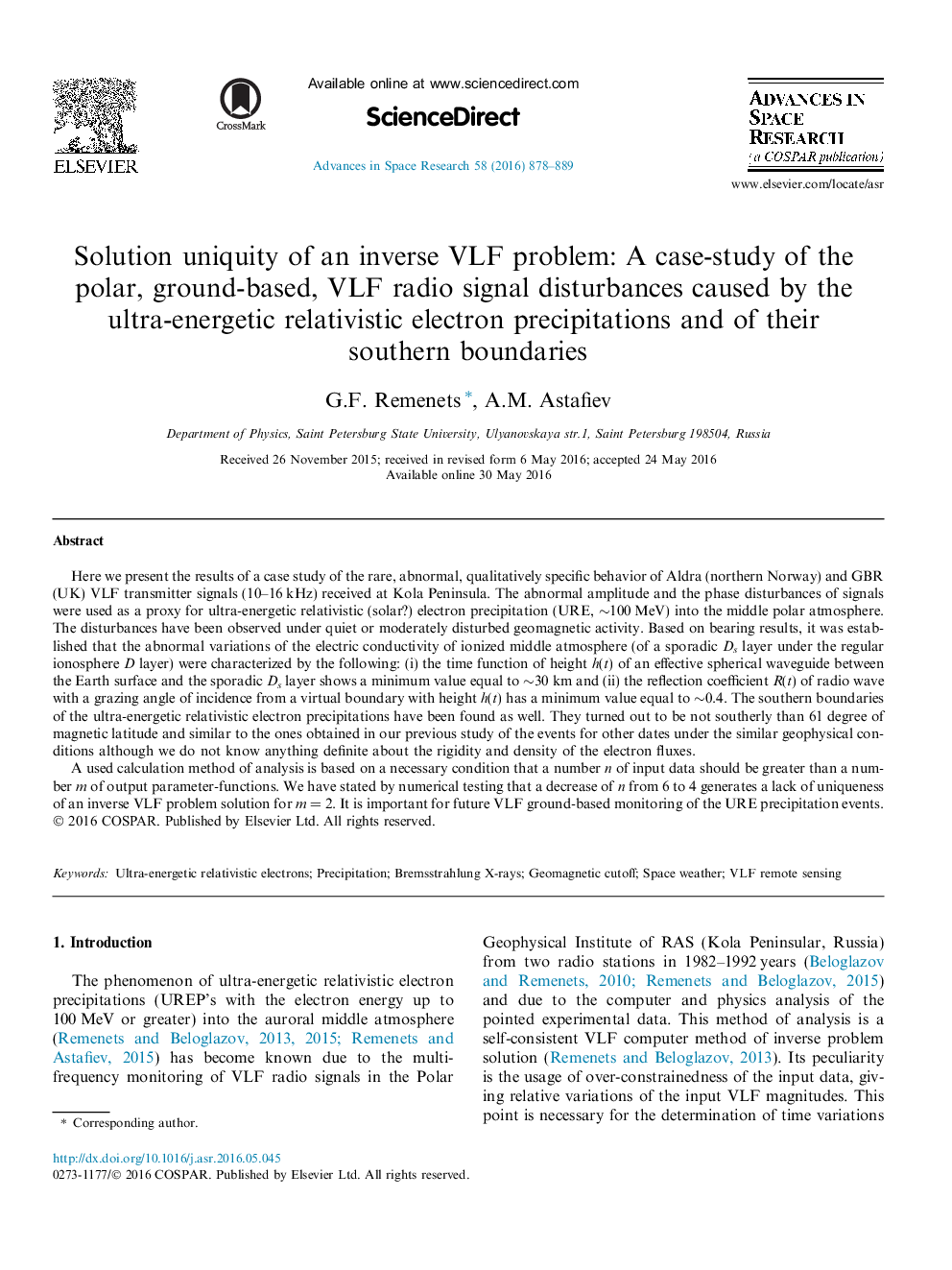| Article ID | Journal | Published Year | Pages | File Type |
|---|---|---|---|---|
| 1763205 | Advances in Space Research | 2016 | 12 Pages |
Here we present the results of a case study of the rare, abnormal, qualitatively specific behavior of Aldra (northern Norway) and GBR (UK) VLF transmitter signals (10–16 kHz) received at Kola Peninsula. The abnormal amplitude and the phase disturbances of signals were used as a proxy for ultra-energetic relativistic (solar?) electron precipitation (URE, ∼100 MeV) into the middle polar atmosphere. The disturbances have been observed under quiet or moderately disturbed geomagnetic activity. Based on bearing results, it was established that the abnormal variations of the electric conductivity of ionized middle atmosphere (of a sporadic Ds layer under the regular ionosphere D layer) were characterized by the following: (i) the time function of height h(t) of an effective spherical waveguide between the Earth surface and the sporadic Ds layer shows a minimum value equal to ∼30 km and (ii) the reflection coefficient R(t) of radio wave with a grazing angle of incidence from a virtual boundary with height h(t) has a minimum value equal to ∼0.4. The southern boundaries of the ultra-energetic relativistic electron precipitations have been found as well. They turned out to be not southerly than 61 degree of magnetic latitude and similar to the ones obtained in our previous study of the events for other dates under the similar geophysical conditions although we do not know anything definite about the rigidity and density of the electron fluxes.A used calculation method of analysis is based on a necessary condition that a number n of input data should be greater than a number m of output parameter-functions. We have stated by numerical testing that a decrease of n from 6 to 4 generates a lack of uniqueness of an inverse VLF problem solution for m = 2. It is important for future VLF ground-based monitoring of the URE precipitation events.
